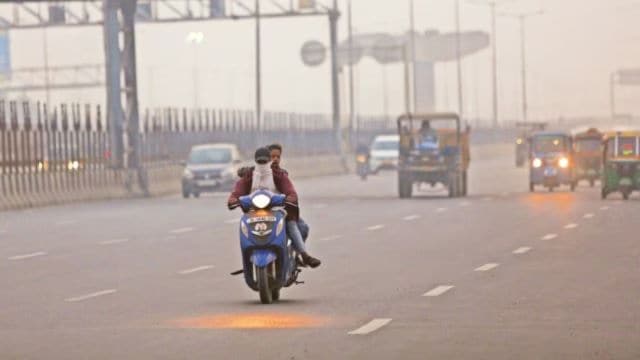ARTICLE AD BOX
 Due to its reactive nature, O3 levels are monitored in an eight-hour average period, instead of 24-hour averages, unlike other pollutants.
Due to its reactive nature, O3 levels are monitored in an eight-hour average period, instead of 24-hour averages, unlike other pollutants.
Ozone levels in all megacities of the country have been high during the summer of 2025, with Bengaluru and Mumbai recording levels above prescribed standards for over a third of summer days, said a new Centre for Science and Environment (CSE) analysis.
The new assessment used data from 80 continuous ambient air quality monitoring stations across Mumbai, Kolkata, Bengaluru, Chennai, and Hyderabad.
When the CSE analysed Delhi’s ozone (O3) levels last month, they were found to have exceeded the prescribed standard on each summer day between March 1 and May 31.
Ozone levels in Bengaluru exceeded prescribed limits 45 out of the 92-day summer days monitored by the CSE, which was a 29 per cent increase compared to last summer, the new analysis said. In Chennai, ozone levels exceeded prescribed levels for 15 out of 92 days, in comparison to no exceedance days for the corresponding period last year.
Mumbai recorded ozone exceedance on 32 out of 92 days, marking a 42 per cent decline compared to the corresponding period last year. In Kolkata, about 22 out of 92 days this summer registered an exceedance of ozone standards, which was an improvement over last year by 45 percent.
Due to its reactive nature, O3 levels are monitored in an eight-hour average period, instead of 24-hour averages, unlike other pollutants. The prescribed ozone standard for an eight-hour period is 100 micrograms/cubic metre as per the National Ambient Air Quality Standards (NAAQ).
Anumita Roychowdhury, executive director, CSE, said, “If unchecked, this can become a serious public health crisis as ozone is a highly reactive gas and can be harmful even with short-duration exposures. In contrast to cities in north India, where high summer temperatures and intense solar radiation can lead to ozone levels exceeding the standards, other cities in warm climates are experiencing consistent ozone exceedance during other seasons as well.”
Story continues below this ad
“Ground-level ozone is beginning to emerge as a pollutant of concern with cities experiencing days exceeding the 8-hour standards. While the level of exceedance is expected to be higher during the summer months with strong sun-shine days and heat, this is emerging as a round-the-year problem in the warmer climate. Clean air action plans for cities and the states need to address this multi-pollutant challenge urgently,” CSE recommended in its analysis.
Ozone is not a primary, but a secondary pollutant formed through chemical reactions between other pollutants under sunlight. Hence, summer months see a spike in ozone concentrations. These chemicals include nitrogen oxides (Nox), volatile organic compounds, and carbon monoxide (CO), pollutants emitted from vehicle tailpipes, power plants, factories, the CSE analysis stated.
Ground-level ozone can affect the airways and lungs adversely, increase susceptibility to infections, worsen respiratory ailments, and decrease lung function.
An award-winning journalist with 14 years of experience, Nikhil Ghanekar is an Assistant Editor with the National Bureau [Government] of The Indian Express in New Delhi. He primarily covers environmental policy matters which involve tracking key decisions and inner workings of the Ministry of Environment, Forest and Climate Change. He also covers the functioning of the National Green Tribunal and writes on the impact of environmental policies on wildlife conservation, forestry issues and climate change. Nikhil joined The Indian Express in 2024. Originally from Mumbai, he has worked in publications such as Tehelka, Hindustan Times, DNA Newspaper, News18 and Indiaspend. In the past 14 years, he has written on a range of subjects such as sports, current affairs, civic issues, city centric environment news, central government policies and politics. ... Read More



.png)
.png)
.png)



























 English (US) ·
English (US) ·